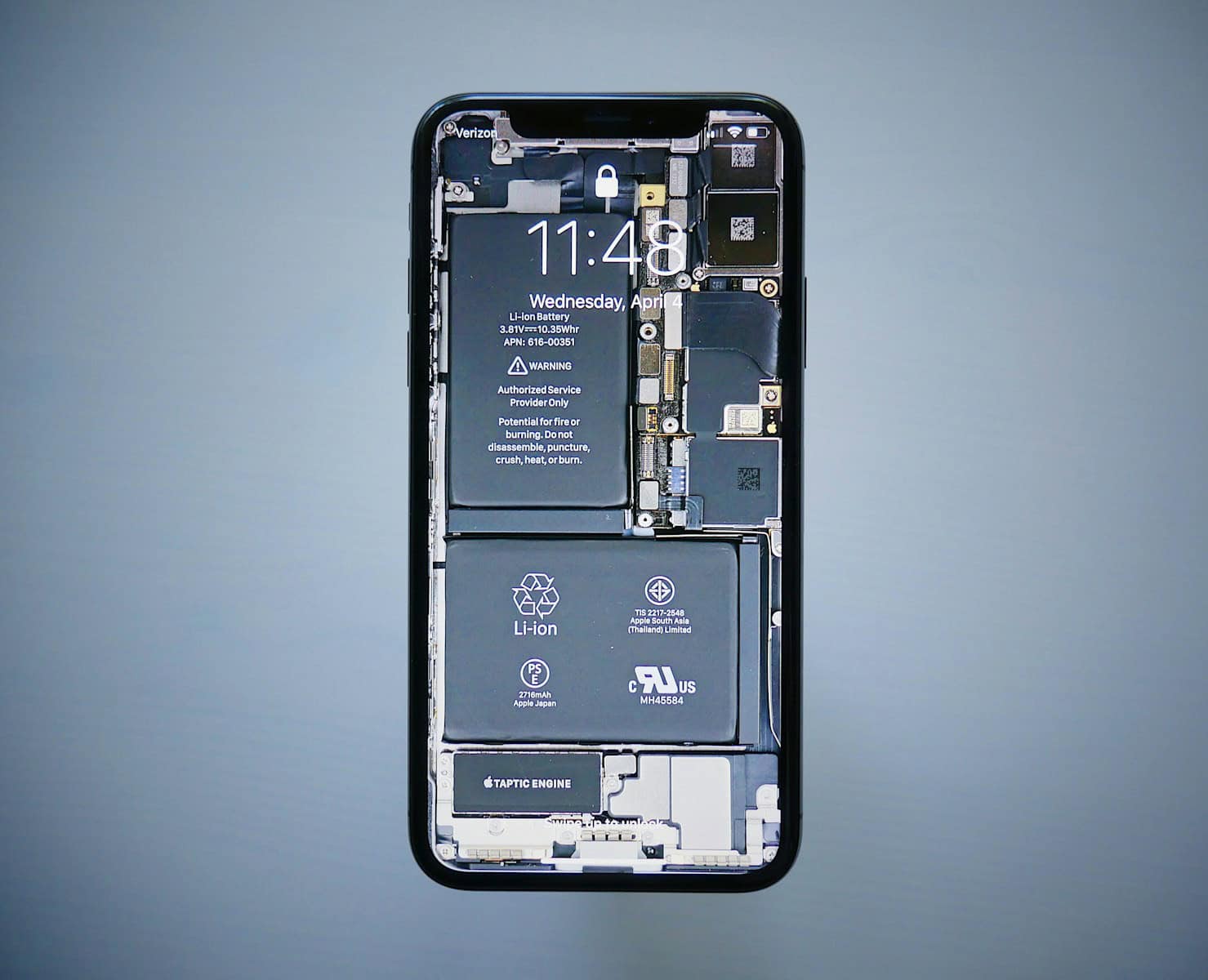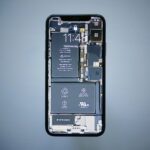The iPhone 16 brings new features and improved repairability. Apple now provides detailed repair manuals for users who want to fix their devices. These manuals include steps for replacing the battery, a common repair need as batteries age.
Replacing an iPhone 16 battery requires some special tools and techniques. The battery is held in place with adhesive that needs heat or an electrical charge to loosen. This process differs from older iPhone models. Apple’s guide suggests using a 9-volt battery to release the adhesive.
Battery health is key for iPhone performance. Apple rates iPhone batteries to keep 80% capacity for about 500 charge cycles. This means most users may need a battery replacement after 18-24 months of regular use. Proper care can extend battery life, but replacement is often needed for older devices.
⚠️ Important:
Battery replacement involves handling sensitive components and adhesives. Apple recommends that only trained technicians or confident DIYers perform this repair. If you’re unsure, visit an Apple Store or an authorized service provider.
🧰 What You’ll Need
According to Apple’s and iFixit’s repair documentation, gather these tools before starting:
Tools
- Pentalobe (P2) screwdriver
- Tri-point (Y000) screwdriver
- Phillips #000 screwdriver
- Plastic opening picks
- Suction handle or iPhone opening tool
- Spudger (plastic pry tool)
- Tweezers
- ESD-safe mat and gloves (optional)
- 9V battery or power supply (5–20V output) – used to release adhesive strips on iPhone 16 models (source)
Replacement Parts
- Genuine iPhone 16 battery
- Replacement adhesive strips
- New display adhesive seal (optional, for waterproofing)
🧩 Step 1: Power Down and Prepare
- Turn off your iPhone 16.
Go to Settings → General → Shut Down, or hold the Side + Volume Down buttons until the power slider appears. - Unplug all cables and remove any case or screen protector.
- Discharge the battery below 25% before starting — a charged lithium-ion battery can catch fire if punctured.
🪛 Step 2: Remove the Display
- Remove the two Pentalobe screws next to the Lightning (USB-C) port.
- Apply gentle heat (around 70°C / 160°F) to the edges of the screen for 1–2 minutes to soften the adhesive.
- Attach a suction cup near the bottom edge and gently lift to create a gap.
- Insert a plastic pick and carefully slide it around the edges to separate the display adhesive.
- Lift the display slowly from the left edge like a book — the cables are on the right side.
⚠️ Do not pull the display completely off yet. It’s still connected by fragile ribbon cables.
⚡ Step 3: Disconnect the Battery and Display Cables
- Remove the tri-point Y000 screws securing the connector shield.
- Lift the shield using tweezers and set it aside.
- Disconnect the battery connector first using a spudger.
- Then disconnect the display and Face ID connectors carefully.
- Once all cables are disconnected, remove the display assembly and set it aside on a soft surface.
🔋 Step 4: Remove the Old Battery
The iPhone 16 uses electrically activated adhesive strips to hold the battery in place — a new design introduced in 2024–2025 models (source: iFixit).
- Locate the adhesive terminals near the bottom edge of the battery.
- Connect a 9V battery (or a power supply set between 5–20V) to the terminals for about 90 seconds.
- This current loosens the adhesive without heat or solvents.
- After activation, gently lift the battery using a plastic card or spudger.
- Do not bend or puncture the battery.
- If the adhesive remains tight, reapply power for another 30–60 seconds.
Once loose, lift the old battery out of the housing carefully.
🧼 Step 5: Clean the Surface
Use a lint-free cloth and a bit of isopropyl alcohol (90%+) to:
- Remove leftover adhesive residue.
- Ensure the new adhesive will bond properly.
Let the surface dry completely before continuing.
🔧 Step 6: Install the New Battery
- Apply the new adhesive strips to the back of the battery or the chassis (depending on the replacement kit).
- Align and press the new battery firmly into place.
- Reconnect the battery connector temporarily to test fit and alignment.
🧠 Step 7: Reconnect the Display
- Reconnect the display and Face ID cables carefully.
- Reconnect the battery connector last.
- Replace the connector shield and tighten the Y000 screws.
- Before sealing the phone, power it on to ensure:
- The display works.
- Touch and Face ID respond correctly.
- The battery is detected in Settings → Battery → Battery Health.
If everything works, power it off again.
🧩 Step 8: Seal and Reassemble
- If you removed the waterproof adhesive, apply a new display seal around the frame.
- Carefully lower the display into place, starting from the right edge.
- Press gently around the edges to secure the adhesive.
- Reinstall the two Pentalobe screws near the USB-C port.
🔋 Step 9: Calibrate the New Battery
For optimal performance:
- Charge your iPhone to 100% and keep it plugged in for 2 more hours.
- Use it until it automatically shuts down.
- Recharge to 100% again without interruption.
This helps iOS recalibrate the battery’s health and performance metrics.
⚠️ Safety Warnings
- Never puncture or crush a lithium-ion battery.
- Avoid using metal tools near the battery.
- If the battery swells, stop immediately and dispose of it safely at a recycling center.
- Use only genuine or high-quality replacement batteries — poor-quality cells can overheat or fail early.
🧾 Summary: iPhone 16 Battery Replacement Overview
| Step | Description |
|---|---|
| 1 | Power off and prepare workspace |
| 2 | Remove display carefully |
| 3 | Disconnect battery and display cables |
| 4 | Electrically release adhesive and remove old battery |
| 5 | Clean chassis and apply new adhesive |
| 6 | Install and connect new battery |
| 7 | Reconnect display and test |
| 8 | Seal, reassemble, and calibrate battery |
🧰 Additional Resources
- Apple Support – iPhone 16 Battery Replacement Guide
- iFixit – iPhone 16 Battery Replacement Step-by-Step
- 9to5Mac – Tools You’ll Need for iPhone 16 Battery Repair
- Apple Self Service Repair Store – for official parts and manuals
✅ Final Note
If you’re not comfortable performing this repair yourself, Apple now supports Self Service Repair — allowing you to rent official tools and purchase genuine parts directly. This ensures your iPhone 16 remains safe, functional, and under warranty compliance.
Key Takeaways
- Apple offers repair manuals for iPhone 16 battery replacement
- Special tools and techniques are needed to remove the battery adhesive
- iPhone batteries typically need replacement after 18-24 months of use
iPhone 16 Battery Fundamentals
The iPhone 16 uses a lithium-ion battery that needs proper care. Safe handling is key when working with these batteries.
Understanding the Lithium-Ion Battery
The iPhone 16 battery is a lithium-ion type. It can hold 80% of its power for about 500 charge cycles. This means it lasts about 18-24 months with normal use.
Lithium-ion batteries are light and last longer than other types. They don’t have a “memory effect,” so you can charge them anytime. These batteries work best when kept between 20% and 80% charged.
Heat can harm the battery. Keep your iPhone away from very hot places. Cold can also slow the battery down for a short time.
Safety and Precautions
Safety is vital when fixing an iPhone 16 battery. Always use real Apple parts or trusted brands like iFixit for replacements.
Wear safety glasses to protect your eyes. Have a sand container nearby in case of fire. Use ethanol wipes to clean the work area.
The iPhone 16 battery needs an electrical charge to loosen its glue. You can use a 9V battery, power bank, or power supply. Apply the charge for 90 seconds or more.
Be careful not to bend or puncture the battery. A damaged battery can catch fire or explode. If the battery swells, stop using the phone and get help from a pro.
Frequently Asked Questions
iPhone 16 battery issues can be tricky. Here are some common questions about battery replacement and care for this model.
At what point is an iPhone 16 battery considered too degraded and necessitates replacement?
An iPhone 16 battery needs replacing when it holds less than 80% of its original capacity. This usually happens after 500 full charge cycles. You can check your battery health in the Settings app under “Battery” and “Battery Health & Charging.”
Is it possible for users to replace the battery of an iPhone 16 without professional assistance?
Yes, users can replace an iPhone 16 battery at home. But it’s not easy. You need special tools and skills. Apple offers a Self Service Repair program with guides and parts. But if you’re not sure, it’s safer to get help from a pro.
What is the typical lifespan of a fully charged battery in an iPhone 16 under regular use?
A fully charged iPhone 16 battery lasts about 15-17 hours with regular use. This includes web browsing, calls, and app use. Heavy tasks like gaming or video streaming will drain the battery faster. Battery life can vary based on settings and apps used.
What steps are involved in the official battery replacement process for an iPhone 16?
The official iPhone 16 battery replacement process has several steps:
- Back up your data
- Turn off Find My iPhone
- Send or bring your phone to Apple
- They will remove the display and old battery
- They’ll install a new battery and seal the phone
- Your iPhone will be tested and returned to you
Are there any risks associated with third-party iPhone 16 battery replacements?
Third-party iPhone 16 battery replacements can be risky. Some dangers include:
- Lower quality batteries that may not last as long
- Damage to other phone parts during replacement
- Loss of water resistance if not sealed properly
- Voiding your warranty with Apple
Always use trusted repair shops or Apple-certified parts for best results.
How do you properly dispose of an old iPhone 16 battery after replacement?
To safely get rid of an old iPhone 16 battery:
- Don’t throw it in the trash
- Find a battery recycling center near you
- Some stores like Best Buy take old batteries
- Apple stores and repair centers also recycle batteries
- Make sure to tape the battery contacts before recycling
This keeps harmful materials out of landfills and helps the environment.







